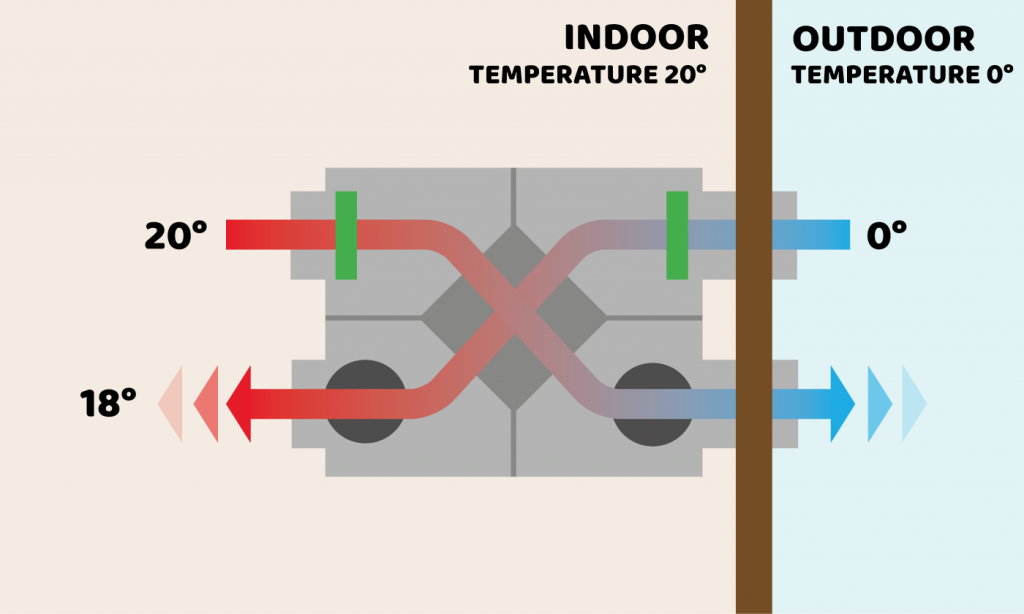How HRV Reduces Energy Bills Every Month
Exploring the Conveniences of Heat Recovery Ventilation for Energy Efficiency in Homes
Heat Recovery Ventilation (HRV) systems provide property owners a functional strategy to enhancing power effectiveness. By recovering heat from outgoing air, these systems can substantially minimize cooling and heating costs. Additionally, they provide a constant supply of fresh air, enhancing indoor air top quality and comfort degrees. As property owners consider lasting options, recognizing the subtleties of HRV systems comes to be significantly crucial. What variables should one review before making such a financial investment?
Recognizing Heat Recovery Ventilation Systems

How HRV Improves Indoor Air Quality

Energy Financial Savings: The Financial Advantages of HRV
Making best use of power efficiency, more heat recovery ventilation (HRV) systems use considerable monetary benefits for property owners. By recovering and reusing warm from exhaust air, HRVs noticeably reduce heating & cooling expenses. This technology can lead to power savings of as much as 30%, depending upon environment and usage patterns. Homeowners frequently see minimized energy costs quickly after installation, making HRVs a monetarily wise investment gradually. Additionally, numerous regions give rewards or refunds for energy-efficient upgrades, additionally improving the financial allure. As power rates continue to rise, the cost-effectiveness of HRVs comes to be significantly clear. In general, the unification of HRV systems not only advertises energy performance yet additionally contributes to long-term monetary savings for families.
The Ecological Impact of Heat Recovery Ventilation
A substantial environmental benefit of heat recovery ventilation (HRV) systems depends on their ability to decrease general energy consumption. By recovering warm from exhaust air and moving it to inbound fresh air, HRV systems decrease the demand for energy-intensive heating and cooling down methods. This reduction in energy need adds to lower greenhouse gas emissions, as much less nonrenewable fuel source is needed to maintain comfortable interior temperature levels. Furthermore, HRV systems enhance interior air high quality by successfully trading stagnant air with fresh exterior air, decreasing dependence on mechanical cooling systems that can harm the atmosphere. On the whole, the implementation of HRV systems supports sustainable living techniques and aligns with international read the article efforts to combat environment change by promoting power performance in property settings.
Picking the Right HRV System for Your Home
Exactly how can house owners ensure they choose the ideal heat recovery ventilation (HRV) system for their demands? Initially, they need to analyze their home's dimension and format, as these variables affect air movement needs. Next, examining the system's performance ratings is essential, as higher rankings indicate better performance and energy cost savings. House owners need to likewise think about setup and upkeep expenses, contrasting various brands and versions for value. Additionally, it is essential to evaluate sound degrees, as some systems operate even more quietly than others. Consulting with a/c specialists can provide customized referrals based on certain home conditions. Examining individual testimonials and service warranties can aid in making an informed choice, guaranteeing that the selected HRV system effectively boosts indoor air high quality and energy performance.
Frequently Asked Concerns

Just how Commonly Should I Clean or Maintain My HRV System?
The regularity of cleaning or keeping a warm healing ventilation (HRV) system typically depends upon usage and environmental factors. Normally, it is advisable to execute maintenance every six months to ensure peak efficiency and air high quality.

Can HRV Equipments Help In Reducing Moisture Levels Inside?
HRV systems can effectively reduce indoor moisture levels by trading stale, damp air with fresh, drier air from outdoors. go to my blog HRV Heat Recovery Ventilation. This procedure assists keep a well balanced interior atmosphere, boosting convenience and avoiding moisture-related concerns
What Is the Life-span of a Common HRV System?
The life-span of a common heat recovery ventilation (HRV) system differs, generally lasting in between 10 to 15 years. Normal upkeep can extend its efficiency and operational life, making sure peak efficiency throughout its usage period.
Exist Any Kind Of Noise Worries With HRV Equipments?
Sound worry about HRV systems can arise, especially from fan procedure. Nonetheless, several contemporary units are developed to lessen sound levels, guaranteeing they run quietly while maintaining performance, which resolves possible disruptions in living settings.
Can I Set Up an HRV System Myself, or Do I Need a Specialist?
The private contemplated whether to install the heat recovery ventilation (HRV) system directly or work with an expert. Typically, while DIY installation is feasible, proficiency guarantees proper performance and compliance with neighborhood building codes, enhancing system efficiency.